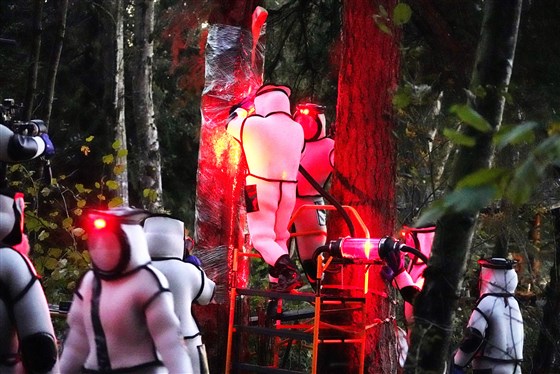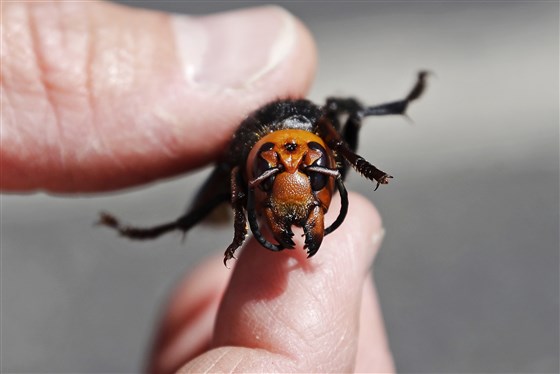Heavily protected workers vacuumed the Asian giant hornets from the nest in Blaine, Washington, two days after its discovery.
The first “murder hornet” nest discovered in the United States has been successfully destroyed, Washington state agriculture officials said Monday.
The ongoing fight to prevent the invasive Asian giant hornet, which can devastate honeybee colonies, from gaining a foothold is far from over and residents are being asked to report any sightings.
Entomologists were able to attach radio trackers to three hornets that had been caught in a trap last week, and one of those led them to the nest, which was discovered Thursday and destroyed over the weekend.
While most Asian giant hornet nests are in the ground, this one was in a tree. A list of new equipment was quickly drawn up after the discovery because time was of the essence: This is the time of year when any new queens could emerge from a nest.
“We wanted to make sure that we took the nest out as quickly as we possibly could to avoid any queens escaping,” Sven Spichiger, managing entomologist for the Washington State Department of Agriculture, said in a video news conference Monday.

On Saturday, workers clad in protective suits — the hornets can sting repeatedly and spit venom — used foam to seal crevices, wrapped the tree in cellophane and then used a vacuum hose to suck out the hornets.
Carbon dioxide gas was pumped in to kill what remained. The tree will be removed and sectioned so the nest can be studied further. “At this point, we believe everything in the nest to be dead,” Spichiger said.
The nest in Blaine, which is in Whatcom County on the U.S.-Canada border, marked the first time a nest of the hornet has been found in the U.S.
The Asian giant hornet was first detected in Washington state in December, and the first insect was trapped in July.
They are native to Asia and have been documented in parts of China and India, and in Thailand, Malaysia and other countries, according to the U.S. Department of Agriculture. On Dec. 8 a dead insect was found in Blaine.
A group of the world’s largest hornets can kill an entire colony of honeybees in hours, the state agriculture department says. The insects typically don’t attack people or pets, but will do so when threatened, according to experts.

The cold weather during Saturday morning’s eradication aided entomologists, Spichiger said.
That kept the nest docile and they were not attacked by any hornets — something in contrast to eradications in other parts of the world where workers are surrounded by flying insects, he said.
“No one was stung, and no one was even attacked that we’re aware of,” he said.
Ninety-eight worker hornets were captured, most through the vacuum but 13 in a net on Friday, officials said.
Specimens will be used in research, including some live hornets that will be studied by the USDA to try and find out what attracts them and what chemicals they react to, which is a first-of-its kind opportunity in the U.S., Spichiger said. Others will be flash frozen and sent to other researchers and universities.
Honeybee populations have been in a worrying decline. The number of honeybee hives in the U.S. has dropped from 6 million in the 1940s to around 2.5 million, the USDA said last year.
The giant hornet eradiction effort could take years, but out of thousands of traps across Washington so far there have been hits only in Whatcom County, Spichiger said.
Officials believe there are at least three other nests in the County.
“Even though we’re just fighting this fight right here in Washington right now, it is literally for the rest of the country,” he said.
Habitat models show the Asian giant hornet is “completely well suited” to live not just in the Pacific Northwest, but also anywhere east of the Mississippi River, he said.
Leave a comment








